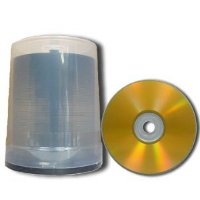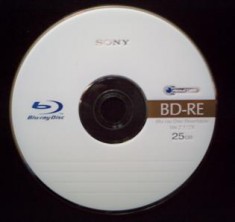
d.) Online storage solution – all the above solutions are still prone to damage by natural calamity or disaster. The last option is to back up your sound recording masters online (e.g. cloud-based solutions). You can take a look at these two popular services:
d.1) Gobbler (paid) – this cloud storage company specializes on media producers doing backups. They offer a 5GB free storage (as of August 2012) and one of key features is automatic versioning. This will ensure that you have a copy of every version you made so that you can simply revert to them when needed.
d.1) Amazon simple storage service (paid) – one of the popular cloud storage solutions. There is no fix cost for doing backups and it depends on your usage (transfer bandwidth for example).
d.2) Windows Skydrive (free) – I use this temporarily when storing some of my old important tracks. They are free but it imposes some limits which you may not like. Also they have limited storage space, so it may not be ideal for storing very big files.
Taking good care of your hard drive used by DAW
While you may be doing backups in periodic basis, you should also take care about the health of your current hard drive that is used by your DAW. Below are the signs of a problematic hard drive::
a.) Random occurrence of “blue screen” in your Windows during booting or during actual operation.
b.) You will hear a crackling sound originating from the hard drive.
c.) You will receive a lot of S.M.A.R.T (Self-Monitoring, Analysis and Reporting Technology) related errors during boot-up or during operation.
d.) During booting, Windows will always automatically check the disk for errors (or even often than what is necessary)
e.) During check disk you will start to see a lot of bad sectors.
f.) The computer will start to slow down when saving files due to some disk writing/reading errors or behave very differently.
A couple days or even weeks later, a hard drive would crash. If you fail to make a backup within this period, you will not be able to recover all of your data. Since all drives will eventually fail (depending on usage, abuse, environment, etc), you should have a back-up plan in case it will stop working. Below are some methods that you can use to take care of your drives and the data.
a.) Use standard power supply for your computer and use UPS – power interruptions can damage a drive in the long term. Using a UPS can allow you to safely shutdown your PC during brownouts and prevent a hard drive damage.
b.) Well-ventilated environment – if the environment is too hot, this can increase the chances of damaging your drive.
c.) Cloning your hard drive – supposing you have a hard drive with operating system installed and not only OS but your expensive recording software as well. In addition to the recording software, you might as well have lots of plug-ins that you are using in your projects such as Waves, etc.
In the event of hard drive failure, it would be impossible to restore the original settings of your entire software/plug-in without having efficient solution. Doing static backups won’t help (copy and paste solution to other disk) to protect your currently used software (such as your OS and it’s registry). The best method is to “clone” the disk. Cloning is simply creating an “exact” replica of your current hard drive in what is called as “image” of the drive. So if the current hard drive fails, you can simply buy a new hard drive of the same size as the previous damage drive, put it back to your computer and then “restore” the image of the clone to that new drive.
This method has some benefits:
1.) You do not need to reinstall your operating system as well as all the software that goes along with it.
2.) You can be sure that your OS will restore its original settings and registry.
3.) It’s faster, because the restoration process takes only one to two hours as compared to re-installation and re-configuration of OS that can last for days.
Below is the procedure:
1.) Install a cloning software (e.g. Macrium Reflect).
2.) Scan for virus, malware and clean your current hard drive that wish to clone.
3.) Check disk (file system). Some cloning software won’t clone a drive if it has a defective file system. You need to check disk it first.
4.) Execute the cloning process and save the image to an external hard drive. This can take time, around 3 to 8 hours depending on the size of your drive.
When your hard drive finally dies and not anymore bootable:
1.) Remove the damage disk in your computer and replace it with a new one.
2.) Restore the image to the brand new hard drive. You will be using a restoration software such as Macrium reflect.
3.) Reboot and then all files will be there, your OS will then boot up normally in the new hard drive. You don’t need to re-install any of your software during the restoration process. Some useful tutorials illustrating the details of this process:
Cloning Windows hard disk with Macrium Reflect Part 1
Part 2 of the tutorial
Part 3 of cloning tutorial
You can clone your disk once in a month or every 3 months to have an updated image of your drive. There are other great backup software such as Acronis, although they don’t offer a free version.
Content last updated on August 15, 2012









No responses yet